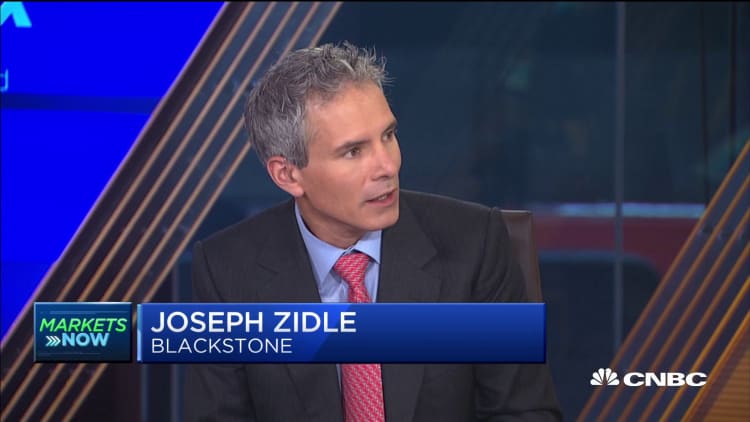
The ongoing Wall Street rally isn't a sign the yield curve inversion is a false recession flag this time, the chief investment strategist at private equity giant Blackstone told CNBC on Friday. Rather, it is exactly what to expect.
The Dow Jones Industrial Average closed Thursday at its highest levels since Aug. 8, and all three major market indexes appear likely to sever a streak of four straight weekly loses on Friday. However, on the last trading day of the month, barring something really dramatic, August will go down as the second negative month in an otherwise strong 2019.
"If you look at the lead-up into recessions what you typically see happening is, No. 1, stocks normally rip for the first six months after the yield curve inverts," Blackstone's Joe Zidle said on "Squawk Box." "No. 2, the data typically improves. No. 3, the curve will generally even revert."
Even though bond yields continued higher Friday, the 10-year Treasury yield was still inverted, trading lower than that of the 2-year. That spread has been in and out of inversion several times since it initially flipped earlier this month for the first time since before the 2008 financial crisis.
"We know we can start our countdown timers" to a recession, Zidle said. "It's an average of about 20 months."
An inverted yield curve has preceded every U.S. recession in the last half-century, but sometimes it takes up to two years before the economic downturn occurs. An inversion occurs when short-term bonds pay out higher yields than long-term bonds.
Not all market watchers are sold on the reliability of bond yield inversions as a recession indicator. Some suggest things may be different this time, in part because increasingly negative yields on overseas bonds have caused foreign investors to seek refuge in U.S. Treasurys. Others point to strong consumer lending and low claims for unemployment insurance as reasons to downplay the possibility of a recession.
Zidle, whose investment firm reported $545 billion in total assets under management in the second quarter, sees it differently. "The yield curve never inverts when conditions are bad," he said. "It inverts when conditions are good."


